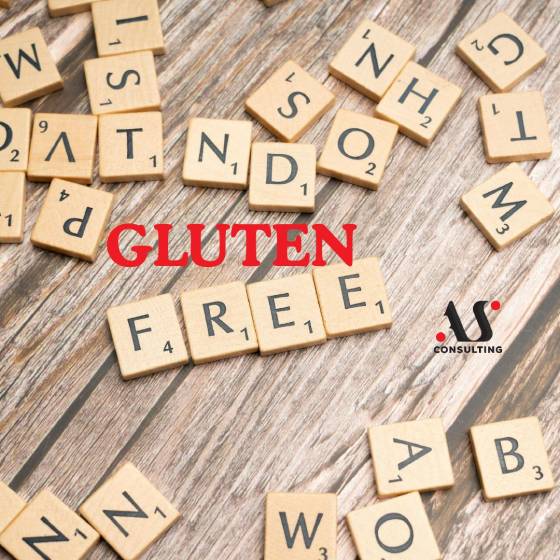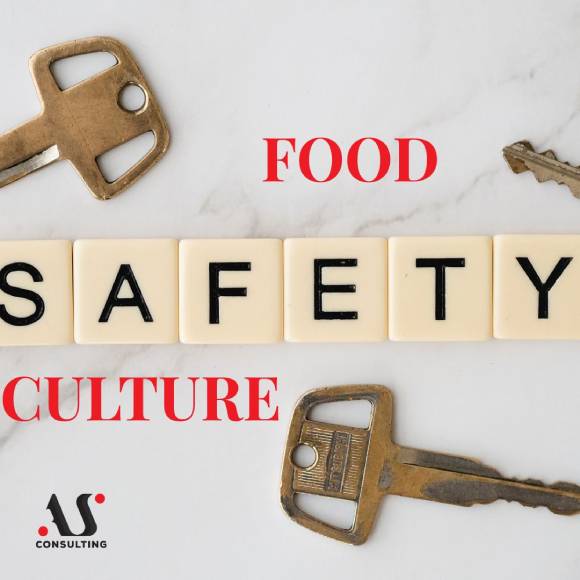
HACCP according to the 2020 Code of Practice
September 15, 2022
FOOD PACKAGING
December 20, 2022Recently, there is a lot of conversation about gluten, gluten-free diet, and “gluten free” products. We will try to explain why it is given so much attention and how to be sure that some food is really gluten-free through this blog.
Gluten is a protein from grains or hybridized strain of wheat, barley and rye or any modified gluten protein or protein fraction derived from these grains.
WHY IS GLUTEN A PROBLEM?
Gluten can be the cause of:
1. Celiac disease, an autoimmune disease (genetic imbalance of the organism), triggered by the consumption of food containing gluten. Celiac disease, as a lifelong autoimmune disorder, leads to damage to the lining of the small intestine and other organs. Today it is known that:
- About 1% of the population suffers from celiac disease
- Celiac disease can appear at any age
- About 83% of the population suffering from celiac disease is undiagnosed or struggles with misdiagnoses
- 5-22% of people with celiac disease inherit the disease from their closest family members
- THERE IS NO PHARMACEUTICAL TREATMENT OR CURE FOR CELIACIA: A 100% GLUTEN DIET IS THE ONLY TREATMENT
There are over 300 symptoms of celiac disease, but the most common are: depression, headaches, migraines, discolored teeth, anemia, chronic fatigue, diarrhea, etc. Untreated celiac disease can lead to the development of other autoimmune disorders such as type 1 diabetes and multiple sclerosis (MS), and many other conditions, including dermatitis herpetiformis (an itchy skin rash), anemia, osteoporosis, infertility and miscarriage, neurological conditions such as epilepsy and migraines, short stature, heart disease and bowel cancer.
2. Intolerance to gluten: people who are intolerant to gluten develop the same symptoms as people suffering from celiac disease but, fortunately, they do not have the same antibodies and intestinal damage as in celiac disease. People who are gluten intolerant will not test positive for celiac disease, nor do they have the same type of intestinal problems as people with celiac disease.
SOURCES OF GLUTEN
Common sources of gluten are: bran, bleached or unbleached flour, bulger, seitan, kamut, semolina, couscous, durum, barley malt, malt vinegar, croutons, bread crumbs, syrup, soy sauce, etc. In many types of food where you might not expect it, you can find gluten, eg ketchup, mayonnaise, beer! (beer production involves the fermentation of starches mainly obtained from cereal grains – most often from barley malt).
GLUTEN FREE CLAIMS
There are different legal requirements regarding gluten free claims depending on the country where the companies are located. However, most of the world’s regulations related to gluten accept a maximum content of 20ppm /(mg/kg).
Does this mean that if a food is made from small amounts of grains containing gluten or ingredients derived from such grains that have not been processed to remove gluten, it can be labeled as “gluten free” if the gluten content is proven to be less than 20ppm? Of course not, a food labeled “gluten-free” cannot be intentionally made with any amount of gluten-containing grain (wheat, rye, barley, or their hybrids such as triticale) or an ingredient derived from such a grain that has not been processed to gluten has been removed. The goal of producing any food labeled “gluten-free” should be for the food to be gluten-free or to contain as little as possible less than 20 ppm of gluten.
“Wheat Free” does not equal “Gluten Free”!!!
So how can we be sure that foods labeled “gluten-free” really do not contain gluten? It is necessary to read the declaration and marked allergenic ingredients, as well as possible allergenic ingredients in traces.
Another, more secure mark is the “Cross grain trademark”, which only AOECS-certified sites receive.
The AOECS standard provides guidance and technical requirements for manufacturers and food safety inspectors for the production of gluten-free products and the Hazard Analysis and Critical Control Points (HACCP) system to ensure that gluten contamination does not occur at any stage during production, packaging. and storage processes. It also provides a clear description of the chemical composition of gluten, as well as the definition of gluten-containing grains.
BRC Gluten free standard
Precisely because of the controversies related to “gluten free” statements, and due to the growing problem with celiac disease or gluten intolerance, the BRCGS has developed a module that can be audited separately or together with the BRC Food standard.
The standard follows the structure of the BRC standard, so it is easy to integrate it with the BRC Food standard, while respecting the additional requirements related to the “gluten free” program.
Company start from the commitment of senior management, which must provide sufficient financial resources both for the infrastructure and for the implementation and maintenance of the Gluten Free Management System. An even more important task of the management is to provide enough professional staff, who will have enough knowledge to maintain the GF management system.
Company policy must confirm commitment to the requirements of the standard and there must also be a GFMS team, with a driver who has completed the GFCP course or an equivalent course acceptable to the BRCGS.
Through pre-requisite programs (PRPs), the company ensures preventive measures against gluten cross-contamination, while special attention is paid to supplier selection and raw material controls.
Perhaps the most misunderstandings will be related to the choice of sampling and testing methods, but the standard has made sure that through Appendix 5, it offers a guide through which a risk analysis can be easily performed and a proper sampling plan can be made.
Through internal checks, traceability testing and recall procedures, the company will be able to verify its gluten free management system.
After successful certification, in addition to the certificate, the company also gets the possibility to use the BRC Trademark on the packaging, which we know is not the case with other standards from the BRC family. Bearing in mind that the BRC requirements are strict, the standard has been supported by a wide network of national and regional celiac associations, therefore it is possible to use the logo on products with prior consultation and approval of the BRCGS.




